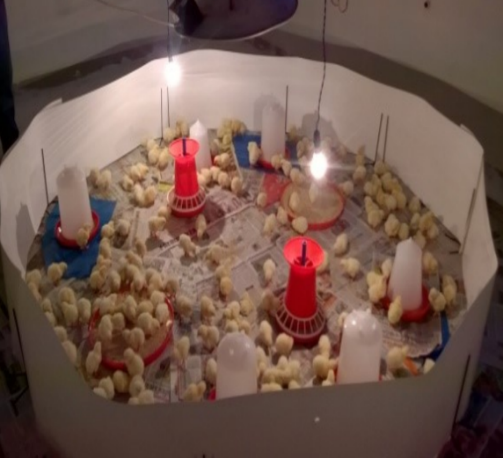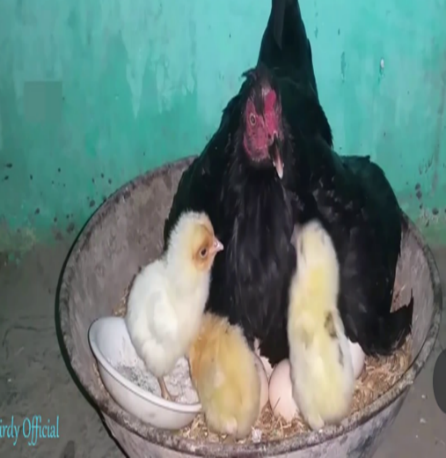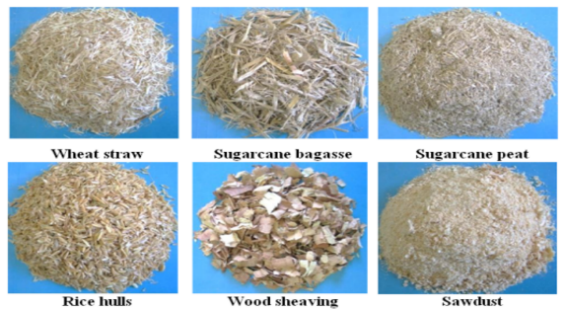
Brooding is the art and science of rearing baby chicks or care and management of chick during early part of their life (up to 4-6 week). A newly hatched chick does not develop the thermoregulatory mechanism fully and takes about two weeks to develop this mechanism and homeostasis. Therefore, they cannot maintain their body temperature properly for the first few weeks of life; and may be subjected to chilling, if not properly taking care of.
Brooding can be classified into natural and artificial brooding –
1. Natural brooding:
- With broody hen
- Only few chickens are raised
- 15-20 chickens
2. Artificial brooding:
Without including hen. In artificial brooding large number of baby chicks are reared in the absence of broody hen. Equipments used for brooding are called brooders.
(a) Hot room brooding: Heated through the central heating system.
(b) Cold room brooding: Heating only area under brooder canopy feathering appears to be better with this system.
Natural Brooding VS Artificial Brooding

Brooder comprises of three elements:
- Heating source
- Reflectors
- Brooder guard
1. Heating source: Heating source may be used as a heating material like –
- Electrical
- Gases like natural gas
- LPG and methane
- Liquid fuel like kerosene
- Solid fuel like coal, wood.
Gas brooder – Natural gas, LPG or methane is connected to heating element which is hanged 3 to 5 feet above the chick to provide heat.
Electrical brooder – One electrical brooder can be used for 300 to 400 chicks.
Infra-red bulbs – It is a self reflecting bulb
One 250 watts IR bulb can provide brooding for about 150 to 250 chicks

2. Reflectors – Reflectors are called Hovers – Flat type hover & Canopy type hover
3. Brooder guard / chick guard
- They are used to prevent chicks from straying too far away from heat supply until they learn the source of heat.
- We have to provide brooder guard with a diameter of 5 feet, height of the brooder should not exceed 1.5 feet.
- During summer season, brooding is done for 5-6 days. In winter season it is 2-3 weeks.

Brooding requirement for chicks
1. Temperature
- Maintain of correct temperature in brooder house is one of the essential factors for successful brooding.
- In first week, it is 95°F (33°C) and reduced by 5°F each week till to room temperature 69.8°F (21°C).
- To low/high temperature will cause poor growth.
2. Ventilation
- 3-5 air exchange/h
- Increase ammonia (25 ppm normal) level in brooder house leading to irritation of eye.
3.Humidity:
- 50-60% of relative humidity.
- High humidity causes problem of wet litter.

4. Litter

A thick layer of 4-5 cm of suitable litter material (saw dust) or rice hull should be spread on floor as bedding material in deep litter system of rearing.
5. Chick Guard/ brooder guard
Barrier provided to (straying away) baby chicks from source of heat drafts.
6. Feeding and watering
- 1st two days chick are fed with rough ground maize.
- 3rd day with mixing of chick mash and maize is introduced.
- Water added with anti-stress like electrolyte and vitamins
- Feeder space should be enough 1/3 rd of all birds never more than 1/2 nd full to avoid feed wastage.
7. Space
- First week – 100 – 120 sq.cm/chick
- 2-4 weeks – 250 – 300 sq.cm/chick
- 5-8 weeks – 700 – 820 sq.cm/chick
8. Health care
Adaptation of correct medicine and vaccination programme.
Medication programme:
- First and Second day – Electrolytes and vitamins.
- 3rd to 7th day – Antibiotics.

1Assistant professor, department of Livestock production management, SCOVAS, Jhajjar, Haryana
2Assistant professor, department of Animal genetics and breeding, SCOVAS, Jhajjar, Haryana
















